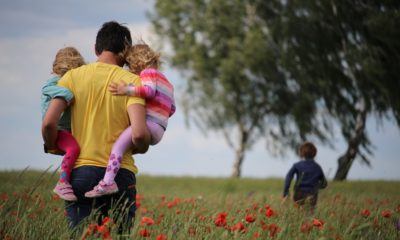Business
Term versus Perm: a conversation on life insurance conversions
Permanent Life Insurance greatly expands upon the uses traditionally associated with life insurance, but usually at a higher cost than term life. Again, as the name alludes to, it is meant to provide a permanent death benefit. These types of policies typically combine the death benefit with a cash value that can be accessed while living.

Most people think of life insurance as the most morbid of financial vehicles. After all, it only works when you’re dead, right? Not so fast. There has been significant evolution since 100 B.C. when Caius Marius of Rome created perhaps the first unofficial life insurance company via a burial club to help pay for funeral expenses in his community. Now, just a few thousand years later, there is over $19.6 trillion of coverage in force, with over $290 billion of benefits having been paid out in 2018. Furthermore, there are almost 800 life insurance carriers in America alone, offering countless variations of the product. There may be more reasons why it is called life insurance, instead of death insurance.
Term Life Insurance, or at least the way it works, is what many consumers first think of when they hear life insurance. As the name suggests, it is coverage for a specified term of time, often 10, 20, or 30 years. It is meant to provide a temporary death benefit at an affordable cost. Sounds like a good value, right? However, according to statistics, a 30 year-old male in good health has a 99% chance of living past age 50. In other words, 99% of the time this type of individual will pay premiums every month for a 20-Year Term Life policy and realize a 0% return, not counting any conceivable lost opportunity costs on spent premiums. As one can interpret, this is more like “use it or lose it” death insurance.
The other side of the term argument recognizes that it is likely the most efficient and effective decision ever made by the 1% who unfortunately do pass away within the policy’s term. It is also difficult to place a numeric value on the peace of mind the other 99% may realize from knowing their loved ones are cared for should the unexpected occur. So, with cost only being an objection in the absence of value, is their enough value in term life insurance to warrant its low cost? Apparently so, as 71% of life insurance policy owners own term life insurance.
Permanent Life Insurance greatly expands upon the uses traditionally associated with life insurance, but usually at a higher cost than term life. Again, as the name alludes to, it is meant to provide a permanent death benefit. These type of policies typically combine the death benefit with a cash value that can be accessed while living. This dynamic offers up what policy owners consider both a “family value” and a “my value”. Permanent insurance can largely be boiled down into Whole Life and Universal Life. Whole Life can grow through dividends whereas Universal Life relies upon credited interest. It is worth noting that Universal Life can potentially lapse if there is inadequate funding due to low interest or increased insurance costs.
If the main point of life insurance is to provide a tax-free benefit to heirs upon death, consumers should recognize term life will likely expire before that event occurs. Permanent, so long as premiums continue to be paid accordingly, can provide that certainty. Possessing certainty within a financial plan can free beneficiaries of having to liquidate other forms of savings or investments that the death benefit might otherwise cover, and in advance, gives the policy owner a permission slip to use assets differently while alive.
The associated cash value could potentially fund retirement, education, gifts to family, donations to charity, while satisfying some “emergency fund” liquidity goals. Not only that, but cash value can have the ability to grow tax-deferred and be accessed in a tax-advantaged manner later in life. As the conversation of cost versus value continues, life insurance shoppers might consider permanent insurance to actually be less costly over time.
No one every knows what the future holds, so it can be a great option for millennials purchasing term life insurance to throw on a conversion option to their policy. These riders can allow the policy owner to convert some or all of their term policy into a permanent product at a later date with no further medical underwriting. This can be an affordable way to leave the door open as goals and concerns change, or as affordability becomes less of an issue based on household income.
If you’re looking to add to the over 28 million life insurance policies purchased annually, do review your entire financial plan before buying a policy. If you fall within the 58% of millennials who sited not knowing which product or how much to buy as the reason for not owning life insurance, consider a Certified Financial Planner to assist in your journey.
__
(Featured image by National Cancer Institute via Unsplash)
DISCLAIMER: This article was written by a third party contributor and does not reflect the opinion of Born2Invest, its management, staff or its associates. Please review our disclaimer for more information.
This article may include forward-looking statements. These forward-looking statements generally are identified by the words “believe,” “project,” “estimate,” “become,” “plan,” “will,” and similar expressions. These forward-looking statements involve known and unknown risks as well as uncertainties, including those discussed in the following cautionary statements and elsewhere in this article and on this site. Although the Company may believe that its expectations are based on reasonable assumptions, the actual results that the Company may achieve may differ materially from any forward-looking statements, which reflect the opinions of the management of the Company only as of the date hereof. Additionally, please make sure to read these important disclosures.

-

 Biotech4 days ago
Biotech4 days agoAdvancing Sarcoma Treatment: CAR-T Cell Therapy Offers Hope for Rare Tumors
-

 Impact Investing2 weeks ago
Impact Investing2 weeks agoShein Fined €40 Million in France for Misleading Discounts and False Environmental Claims
-

 Impact Investing1 day ago
Impact Investing1 day agoNidec Conversion Unveils 2025–2028 ESG Plan to Drive Sustainable Transformation
-

 Impact Investing1 week ago
Impact Investing1 week agoVernazza Autogru Secures €5M Green Loan to Drive Sustainable Innovation in Heavy Transport

























